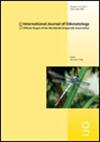Dragonfly (Odonata) community structure in the Eastern Highlands Biodiversity Hotspot of Zimbabwe: potential threats of land use changes on freshwater invertebrates
IF 1
4区 农林科学
Q3 ENTOMOLOGY
引用次数: 3
Abstract
We examined the diversity and potential drivers of dragonfly distribution in a biodiversity hotspot of Southern Africa (Eastern Highlands, Zimbabwe) by surveying 30 sites (13 lentic and 17 lotic habitats) located within this region. Additionally, we identified the anthropogenic factors that may threaten Odonata diversity and abundance. Our results revealed that 27 odonate species are associated with dams and ponds, one species is associated with streams and four species are associated with swamp forests. Considering odonate diversity between protected and unprotected areas, we found significantly higher diversity of odonates in streams in protected areas compared to non-protected areas. Broadly, we found anthropogenic activities (e.g. commercial exotic tree plantations, mining activities, vegetation clearing) possibly affect Odonata diversity (by decreasing abundance and diversity) compared to those within protected and undisturbed habitats. Our results reveal that several human activities like human encroachment into riverine habitats potentially threaten the existence of freshwater species in this biodiversity hotspot and biodiversity hotspots elsewhere.津巴布韦东部高地生物多样性热点地区的蜻蜓群落结构:土地利用变化对淡水无脊椎动物的潜在威胁
我们通过调查位于南部非洲生物多样性热点地区(津巴布韦东部高地)的30个地点(13个扁豆栖息地和17个乳液栖息地),研究了蜻蜓分布的多样性和潜在驱动因素。此外,我们还确定了可能威胁蜻蜓多样性和丰度的人为因素。我们的研究结果显示,27种齿形动物与水坝和池塘有关,一种与溪流有关,四种与沼泽林有关。考虑到保护区和未保护区之间的齿形石多样性,我们发现与非保护区相比,保护区溪流中齿形石的多样性明显更高。总体而言,我们发现,与受保护和未受干扰的栖息地相比,人类活动(如商业外来树木种植、采矿活动、植被清理)可能会影响蜻蜓的多样性(通过减少丰度和多样性)。我们的研究结果表明,一些人类活动,如人类入侵河流栖息地,可能威胁到该生物多样性热点和其他地方生物多样性的淡水物种的存在。
本文章由计算机程序翻译,如有差异,请以英文原文为准。
求助全文
约1分钟内获得全文
求助全文
来源期刊

International Journal of Odonatology
ENTOMOLOGY-
CiteScore
2.30
自引率
0.00%
发文量
15
审稿时长
>12 weeks
期刊介绍:
International Journal of Odonatology (IJO) is aimed at providing a publication outlet for the growing number of students of Odonata. It will address subjects such as the ecology, ethology, physiology, genetics, taxonomy, phylogeny and geographic distribution of species. Reviews will be by invitation, but authors who plan to write a review on a subject of interest to the journal are encouraged to contact the editor.
 求助内容:
求助内容: 应助结果提醒方式:
应助结果提醒方式:


